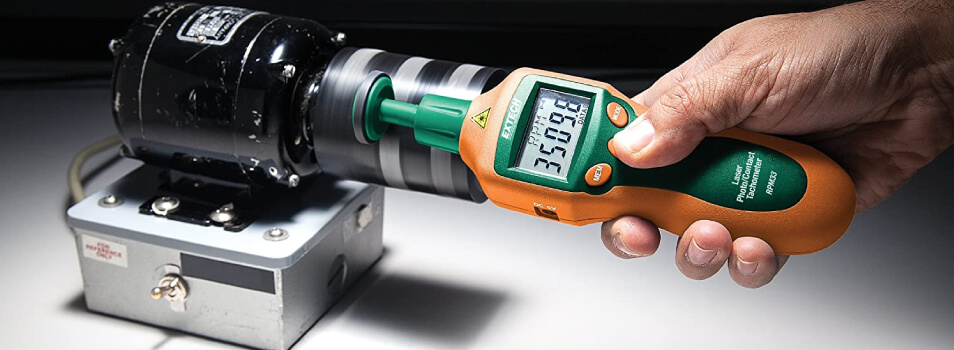
What is a Tachometer Used for in Modern Technology?
Share
A tachometer is an essential device in various fields, particularly in automotive and engineering settings, primarily used for measuring the speed of machinery. By understanding what a tachometer is used for, professionals in the tech arena can significantly enhance their decision-making processes regarding equipment and performance. Whether you are a tech professional or a passionate tech enthusiast, grasping the functions and applications of a tachometer can provide you with valuable insights into how machinery operates at different speeds.
In this article, we will delve deep into the subject, covering everything from basic definitions to advanced applications and technology behind tachometers. So, what is a tachometer used for? Let's find out!

The Basics of a Tachometer
A tachometer measures rotational speed, typically expressed in revolutions per minute (RPM). Used primarily in vehicles, tachometers can help monitor engine performance by alerting drivers when they are approaching maximum RPMs, which can lead to engine damage.
The early designs of tachometers were purely mechanical, leveraging a spinning mass to give a direct indication of speed. However, modern tachometers incorporate advanced electronics, improving accuracy and functionality. If you want to delve into the historical aspect, read about who invented the stroboscope.
Applications of Tachometers in Different Fields
Tachometers in Automotive Engineering
In the automotive domain, tachometers serve a critical role by providing crucial feedback to the driver. By displaying RPM, drivers can optimize their shifting patterns, ensuring they operate within a safe range. This function not only enhances vehicle performance but also increases the engine's lifespan.
Industrial Machinery and Equipment
In industrial settings, tachometers measure the speed of motors, pumps, and other machinery. Accurate speed readings allow for optimal performance and energy efficiency, reducing operational costs. Advanced tachometers are designed with automation in mind, enabling continuous monitoring of machinery.
Biomedical Applications
Interestingly, tachometers are also utilized in biomedical applications. Medical devices often require precise speed measurements to operate effectively. For instance, certain pumps in medical machines rely on tachometer data to maintain required flow rates. Understanding what a tachometer is used for can help tech professionals make informed decisions when developing or operating these devices.
Understanding How a Tachometer Works
The technology behind tachometers can vary but typically involves two main components: the sensing element and the signal processing unit. The sensing element detects the rotational speed, converting this information into a signal, which the processing unit then interprets and displays as measurements. If you're curious about how to wire one, click to go through how to wire a tachometer.
Different Types of Tachometers
Mechanical Tachometers
Mechanical tachometers use a needle to show speed based on centrifugal force. While they were popular for many years, they are becoming increasingly rare with the advent of digital technology.
Digital Tachometers
Digital tachometers provide a more precise reading via electronic methods. They often include advanced features, such as data logging and integration with other systems.
Laser Tachometers
For non-contact measurements, laser tachometers use a beam of light to measure the speed of rotating objects, ideal for applications where direct contact may not be possible.
Choosing the Right Tachometer for Your Needs
Selecting the right tachometer involves considering the application, environmental factors, and necessary features. For example, automotive tachometers need to be responsive and readable, while industrial machinery may require more advanced specifications. For a deeper insight, refer to what is a tachometer.
Future Trends in Tachometer Technology
The growth of smart technology and IoT devices is paving the way for more intelligent tachometers capable of sending real-time data over the internet. This advancement not only enhances remote monitoring but also enables predictive maintenance, leading to increased efficiency and minimal downtime.
Conclusion
In summary, understanding what a tachometer is used for and how it functions can empower tech professionals and enthusiasts alike. Recognizing the diverse applications and future potentials of tachometers can open new avenues for better performance in various fields.

FAQ
1. What is a tachometer?
A tachometer is a device used to measure the rotational speed of a shaft or disk in machinery, typically expressed in RPM.
2. Where are tachometers commonly used?
Tachometers are commonly used in automotive engineering, industrial machinery, and biomedical devices.
3. How does a digital tachometer differ from a mechanical tachometer?
Digital tachometers use electronic sensors for precise speed readings, while mechanical tachometers rely on mechanical components to display speed.
Learn more about how tachometers workAs an Amazon Associate, I earn from qualifying purchases.
